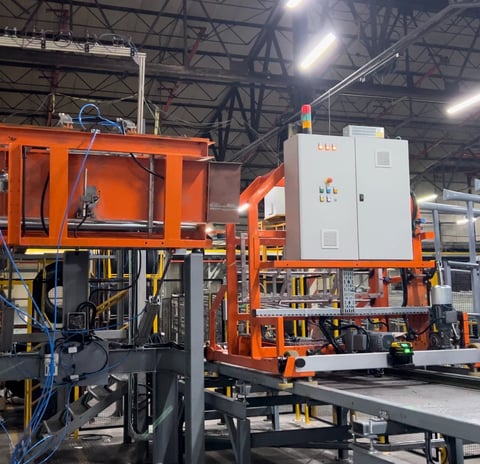Material Handling Systems
Material Handling Systems optimize the movement, storage, and control of materials within warehouses, ensuring seamless workflow, increased efficiency, and reduced manual intervention. These systems facilitate the efficient flow of products through various stages, from receiving to storage, picking, and dispatch, making them essential for high-performing warehouses.
Key Features
Automated Conveyors: Used to transport items along set routes within the warehouse, conveyors reduce the need for manual transport, enhancing workflow and speeding up processes.
Automated Guided Vehicles (AGVs): These self-driving vehicles move materials between different points in the warehouse, adding flexibility and reducing human involvement in handling.
Robotic Pickers and Arms: Ideal for sorting, picking, and packaging, robotic pickers increase precision and speed in high-demand environments.
Palletizers and Depalletizers: Automated systems that load and unload pallets, streamlining bulk handling operations.
Vertical Lifts and Elevators: Essential for warehouses with multi-level storage, these systems transport goods safely and efficiently between floors.
Benefits
Enhanced Efficiency: Automation speeds up repetitive tasks, reducing lead times and ensuring faster order processing.
Reduced Labor Costs: Material handling systems minimize manual work, which lowers labor expenses in the long run.
Improved Safety: By reducing physical handling, these systems decrease workplace accidents and protect both employees and goods.
Scalability: The systems are flexible and can be scaled up or modified as warehouse demands grow.
Real-Time Inventory Control: Integrated with WMS, these systems allow for continuous monitoring, ensuring accurate inventory levels and reducing errors.
Applications of Material Handling Systems
Distribution Centers: Quick sorting, packing, and dispatching of goods in high-turnover facilities.
Manufacturing Plants: Moving raw materials and finished products between processing stations.
Retail Warehousing: Handling large inventory volumes to support restocking and order fulfillment.
Cold Storage: Durable handling solutions designed for low-temperature environments.
How It Works
Receiving: Products are moved from receiving docks into the warehouse via conveyors or AGVs.
Storage and Sorting: Items are organized and stored per WMS directives, optimizing space and accessibility.
Order Fulfillment: Automated systems retrieve items for orders, sorting and preparing them for dispatch.
Shipping: Orders are transferred to dispatch points, ready for loading and delivery.


